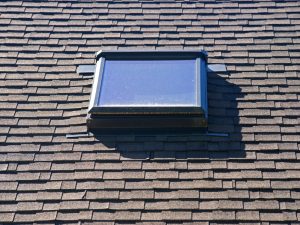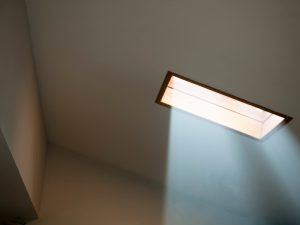Skylights are a fantastic addition to any home, bringing in natural light, improving air circulation, and enhancing overall ambience. However, their placement is crucial to achieving the desired effect. Poor placement can lead to unwanted heat, glare, or structural issues. This article will explore the factors that affect skylight placement in your home design and how to maximise their benefits for aesthetics and functionality.
Why does skylight placement matter?
The placement of your skylight can impact many aspects of your home, from energy efficiency to the amount of natural light you receive. Correct placement can make a room more open, airy, and brighter. On the other hand, poor placement can lead to problems like excessive heat gain, glare, and discomfort. Here’s why getting it right matters:
- Maximising natural light: Well-placed skylights can flood a room with natural light, reducing the need for artificial lighting during the day.
- Energy efficiency: Skylights can help with passive heating, reduce reliance on artificial lighting and heating, and save energy and money.
- Aesthetic enhancement: A strategically placed skylight can transform a dull space into a vibrant, airy room.
- Increased property value: Homes with well-designed skylight placements often have higher resale value due to their aesthetic appeal and energy efficiency.
Proper placement ensures you get the most out of your skylight installation while avoiding potential issues like unwanted heat or glare.
Can skylight placement impact indoor temperature?
Skylights are an excellent way to bring natural light into your home, but their placement can also influence the temperature. If positioned incorrectly, skylights can cause overheating or excessive cooling costs. Here’s how skylight placement affects temperature control:
- Solar heat gain: Skylights can absorb sunlight and transfer heat into your home. The location and angle of the skylight determine how much solar heat is gained.
- Roof pitch and orientation: The angle at which your skylight is placed can either help or hinder temperature regulation. For example, skylights facing the north will capture more sunlight, increasing heat gain in the winter.
- Shading: Skylights with proper shading mechanisms can reduce heat gain during the summer, keeping rooms cooler.

Improving your home’s energy efficiency starts with understanding different types of home shading and carefully considering the orientation, angle, and type of skylight you use.
How do orientation and roof pitch affect skylight placement?
When designing skylight placement, two critical factors to consider are the orientation of the skylight and the pitch of your roof. These elements significantly affect how much sunlight enters your home and at what times of day.
- Roof pitch: A steeper roof pitch can affect the angle at which sunlight enters the skylight. Skylights placed on low-pitched roofs might not capture enough light, whereas those on steep roofs may let in too much.
- Orientation: Skylights facing different directions capture varying amounts of sunlight. For example:
- North-facing skylights (in the Southern Hemisphere) get the most consistent light throughout the day.
- East-facing skylights will capture sunlight in the morning, while west-facing skylights provide afternoon sun.
- Seasonal variation: The placement will also affect how much light and heat your skylight lets in during different seasons. Adjusting the angle and direction based on seasonal changes can help keep your home comfortable year-round.
When planning your skylight placement, consider both orientation and roof pitch to optimise natural light and temperature control.
Can skylight placement affect energy efficiency?
When correctly placed, skylights can be a key factor in improving your home’s energy efficiency. Here’s how:
Feature | Energy Benefit | Seasonal Focus |
Passive heating | Warms interior | Winter |
Natural lighting | Reduces lighting use | Year-round |
Ventilation | Releases hot air | Summer |
Solar heat gain | Limits overheating | Summer |
Integrating skylights into your design with energy efficiency in mind can significantly lower your utility bills and create a more eco-friendly home.
Are there common placement mistakes to avoid?
Installing skylights may seem straightforward, but several mistakes are commonly made when deciding where to place them. Avoiding these errors can prevent issues like poor insulation, excessive heat, or privacy concerns.
- Poor insulation: Not ensuring your skylight is insulated correctly can lead to heat loss or gain, making your home less energy-efficient.
- Ignoring sun angles: Not considering the sun’s path throughout the day can lead to overheating or underexposure.

- Incorrect size: A skylight that is too large or too small can affect the amount of light and temperature control in a room.
- Lack of ventilation: Installing a skylight that doesn’t open can leave a room stuffy or overly warm during the summer months. In contrast, skylights can improve ventilation in metal roof homes by helping release trapped heat and allowing fresh air to circulate.
- Improper placement near structures: A skylight placed where it’s obstructed by trees, buildings, or other structures can reduce the amount of light that enters the space.
Planning your skylight placement carefully can prevent costly mistakes and ensure that you enjoy all the benefits of skylights.
What are the risks of poor skylight placement?
Improper skylight placement can lead to several issues that affect your home’s functionality, comfort, and energy efficiency. These risks include:
- Glare: If placed incorrectly, skylights can create harsh glare that makes a room uncomfortable to spend time in, especially in living or working spaces.
Heat gain or loss: Poorly positioned skylights can cause excessive heat gain or loss, affecting your home’s temperature and energy bills. - Water leaks: Incorrect installation or placement can result in water leakage, especially if the skylight is positioned too low or not sealed properly.
- Privacy concerns: Skylights placed in rooms that face other homes or public spaces can compromise privacy.
To avoid these risks, working with experienced professionals who understand the complexities of skylight placement and installation and have expertise in choosing the best materials for skylights on metal roofs is essential.
Which rooms benefit the most from skylight placement?
Some rooms in your home are better suited to skylight placement due to their function or size. Here are the rooms that benefit most from skylights:
- Living rooms: Skylights in the living room can increase natural light and create a bright, welcoming atmosphere.
- Kitchens: Kitchens with skylights receive natural light and benefit from improved ventilation.
- Bathrooms: A skylight can help with ventilation and natural light in a bathroom, making it more comfortable and airy.
- Home offices: Skylights in your home office can boost productivity by providing a steady natural light source.
- Hallways: A skylight can transform a dim hallway into a bright, airy space.
Selecting the right room for your skylight can enhance your home’s look and function. You can also explore reliable skylight installation solutions tailored for different home layouts.
Conclusion
Incorporating skylights into your home design can bring countless benefits, from increased natural light to improved ventilation and energy efficiency. However, it’s essential to consider factors like roof pitch, orientation, and room function when deciding where to place them. Avoiding common placement mistakes and ensuring proper insulation will help you enjoy all the advantages skylights offer.
To enhance your home’s roof with skylights, explore how Scott’s Metal Roofing can elevate your home.

